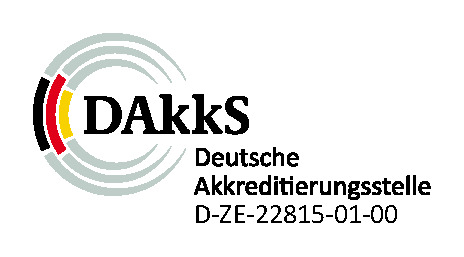Project Certification Offshore
DAkkS-accredited certification body for offshore wind projects

Con4Mare is an independent and DAkkS-accredited Certification Body for offshore wind projects, operating in accordance with ISO/IEC 17065:2013. We provide impartial, transparent, and comprehensive evaluations and conformity assessments covering the entire lifecycle of offshore wind farm projects.
Our scope includes site assessment, design review, manufacturing surveillance, transport and installation (T&I) surveillance, and commissioning, guaranteeing that offshore structures comply with all relevant national and international standards for the project certificate to be issued.
We also support certification needs during the operational phase to maintain or extend the validity of the project certificate.
Con4Mare certifies offshore wind projects in accordance with:
- BSH Standard 7005 (2021-06) – Structural design of offshore structures
- BSH Standard 7004 (2014-02) – Geotechnical investigations for offshore foundations
- IEC 61400-22 – Conformity testing and certification of wind turbines (withdrawn; still applied as a reference where applicable)
We are an experienced Certification Body and have supported various offshore wind projects in the German North Sea and Baltic Sea with certification services in compliance with BSH and IEC requirements.
Review of the design basis
The review of the design basis is a core element of offshore wind project certification. It ensures that all site-specific environmental conditions, such as wind speeds, wave heights, and seabed characteristics, are accurately assessed and properly reflected in the design criteria.
A crucial step is the verification that the selected design standards and engineering methodologies are suitable for the specific offshore location and compliant with applicable regulatory frameworks, including BSH requirements and international standards.
The review also confirms that all technical constraints and requirements relevant to offshore environments have been adequately considered.
Design review
The design review for project certification of offshore wind farms ensures that all structural components are engineered to withstand site-specific environmental conditions, including extreme weather events, marine forces and installing and transportation states.
It is essential to verify that the design adheres to established industry standards and best practices, covering aspects such as load calculations, integrated load analysis (ILA), material selection, and corrosion protection.
Furthermore, the review must confirm that the design ensures the structural integrity of the wind farm over its intended lifespan.
Manufacturing surveillance
Manufacturing surveillance involves the monitoring of production processes to ensure that selected components are manufactured in accordance with the approved design, corresponding specifications, and applicable quality standards.
This includes audits and inspections, as well as spot checks to verify material quality, dimensional accuracy, and adherence to design tolerances.
Additionally, it is essential to document, address and resolve any relevant deviations or non-conformities promptly in order to maintain the integrity, compliance, and long-term reliability of the final components.
Transport and installation
The surveillance of transport and installation (T&I) requires at first verifying that all logistical plans and procedures are in place to safely and efficiently move offshore wind components from the manufacturing site to the installation location. This involves ensuring that all marine operations are conducted in compliance with safety regulations, certification requirements, and industry best practices. In many cases, this is executed in close collaboration with the project’s designated Marine Warranty Surveyor, incorporating the results of their inspection and supervision.
Additionally, thorough documentation and real-time monitoring are essential to promptly address any issues and to ensure the alignment and structural integrity of all components during offshore installation.
Commissioning surveillance
Commissioning surveillance involves verifying that all systems and components of the offshore wind farm are properly installed, function as intended, and are ready for operation.
This includes the review of commissioning procedures and test documentation, as well as the supervision of final functional checks and tests to ensure compliance with applicable standards and the approved design.
Any irregularities or deviations must be documented and resolved to confirm that the installation meets all requirements for project certification and long-term operational reliability.
Periodic inspections
Periodic inspections in the operational phase are regularly scheduled assessments to ensure that all structural and functional components of the offshore wind farm continue to perform optimally and safely. These inspections include checking for signs of wear, corrosion, and other potential issues, as well as verifying that maintenance routines are effectively preventing any degradation.
It is also important to document all findings and to follow up on corrective actions taken in order to ensure continued compliance with the project certificate and relevant regulatory requirements.








